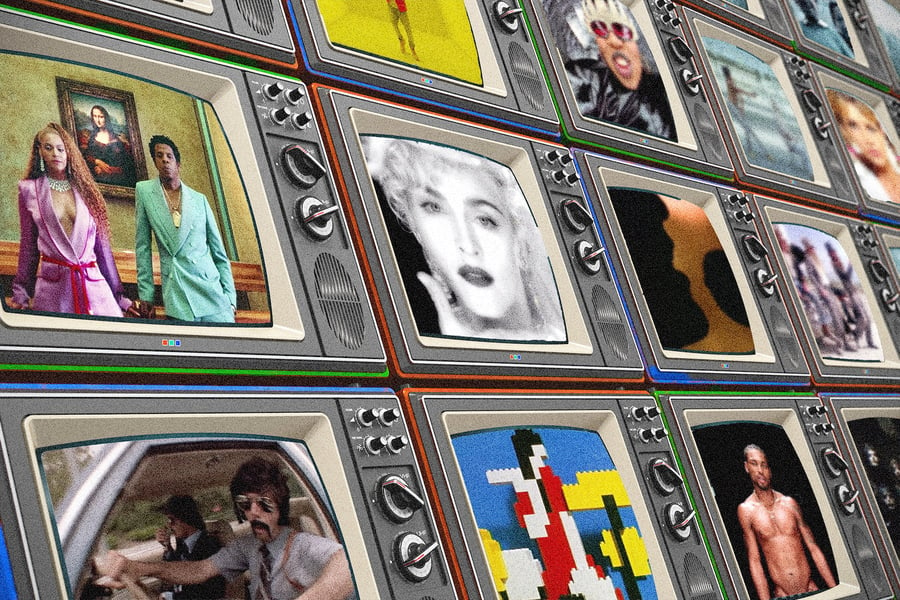The 100 Greatest Music Videos
From Adele to ZZ Top — our ranked list of the best music videos of all time

Photo illustration by Griffin Lotz. Images using in illustration via Scanrail/Adobe Stock; Youtube
In the wee hours of August 1st, 1981, someone flipping through their channels might have come across the image of a rocket blasting into space. The familiar sight of Neil Armstrong exiting his lunar module and walking on the moon would fill the TV screen. And then they’d hear a voiceover, with all the smooth patter of an FM disc jockey: “Ladies and gentlemen, rock & roll.” Cue power chords, and a flag with a network logo — something called MTV — that rapidly changed colors and patterns. This wasn’t a news channel; it was “Music Television.” If they kept tuning in, they’d see clips and hear VJs talk about bringing you the latest in music videos. At this point, viewers might have a few questions, like: Is this like a radio station on TV? What is a “VJ”? And what the hell is a “music video”?
A year later, no one was asking that last question. Virtually everyone knew what a music video was, and they wanted their MTV. The network revolutionized the music industry, inspired a multitude of copycat programming, made many careers, and broke more than a few. Entire genres and subgenres — from hip-hop to grunge to boy-band pop to nu metal — became part of the mainstream. The format proved so durable that when MTV decided to switch things up and devote its air time to game shows, reality TV, and scripted series, thus shutting down the primary pipeline for these promos, artists still kept making them. The internet soon stepped in to fill the void. Four decades after the channel’s launch and long after it stopped playing them, music videos still complement songs, create mythologies, and cause chatter and controversy. We no longer want our MTV. We continue to want our music videos.
In honor of MTV’s 40th anniversary, we’ve decided to rank the top 100 music videos of all time. You’ll notice some significant changes from the last time we did this. (Yes, Michael Jackson is on here. No, “Thriller” is not.) A few pre-date the channel; several have never played on MTV at all. But all of these picks are perfect examples of how pairing sound and vision created an entire artistic vocabulary, gave us a handful of miniature-movie masterpieces, and changed how we heard (and saw) music. From Adele’s “Hello” to ZZ Top’s “Gimme All Your Lovin’” — these are the videos that continue to thrill us, delight us, disturb us, and remind us just how much you can do in three to four minutes with a song, a camera, a concept, a pose, some mood lighting, and an iconic hand gesture or two.
From Rolling Stone US




















































































